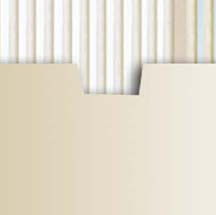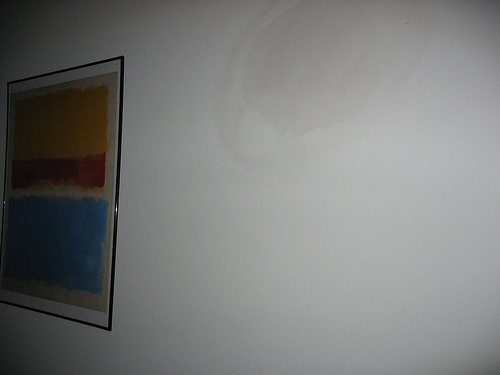[post_name drywall installation Does Your Concrete Foundation or Drywall Have Cracks?

There many reasons a person would be seeking drywall repair works. Simply today I was obtaining a sandwich at a regional restaurant and also a group of teens were extoling exactly how they had just ended up repairing the walls from an event that left hand and also were really hoping that their moms and dads wouldn't notice when they returned; I question that will certainly be much more surprised.Doors are notorious for having an animosity versus drywall. People have been known to jab, punch or also fall via sheetrock at various phases of life. If you have actually decided to rent out a building, you may be getting a challenging education and learning in just the amount of strange and motley problems can take place to walls. Possibly you have bought your very first residence and are discovering some fracturing or nail stands out -inspect your contract, a great part of that needs to be covered in your initial warranty.Regardless of the source of the damage to your drywall, you now have to
choose whether it deserves investing your time to fix these locations or if you will employ somebody else to complete the job for you. Whether you are doing the repairs yourself or going over the cost with contractors, you might locate these factors helpful:1)Absolutely nothing is excellent, mostly you are developing the perception of excellence
, when repairing also a tiny damage you will certainly wish to flare your repair area so as to obtain a higher surface area soaking up the repair service. This will certainly help to divert the eye from incongruities that also the most effective repair service could leave behind.2)If the sheetrock is damaged, heavily split or noticeably irregular you most likely will require to eliminate and re-inforce a section behind the wall board. I have located that 1"x3"want is a fantastic resource in providing a company backing and plenty of room to secure the fixed area to existing drywall. There are some re-inforced surface area patching products, however unless you are made use of to functioning with these they can be tough to appearance.3)Warm muds (joint compounds that have an established drying out time)and aerosol textures are excellent for smaller areas.
When dealing with warm mud, inspect the label and also provide yourself plenty of time prior to the material sets because they have the tendency to be a little harder to tool and also tough to sand. The aerosol structures are fantastic for tiny repair works as they conserve you from having to obtain your texturing tools out and also completely dry much faster compared to traditional structure.
Drywall Plastering - A Great New Method
Drywall patching needs perseverance and also determination. I am mosting likely to break the procedure down easily so you will certainly be much more notified prior to you start your next completely dry wall patch.One thing you should take into consideration when collaborating with drywall is the DUST. If you are sensitive to the drywall dust or gypsum you might intend to get a fragment mask, safety and security goggles or gloves as well as put on a lengthy sleeve tee shirt for security. Always remember to safeguard any type of furnishings that you want to keep dirt complimentary, too!Step1: prep the
hole or location to be patched.If the opening or location to be patched has loose wall surface board paper you will have to remove the loose paper and plaster. Currently if the wall board paper desires to proceed destroying the side of the wall surface, a way to quit this is the take a razor blade as well as reduced from the loose location about an inch or so. Exactly what you are doing is racking up the wall so when you tear of the loose paper it will certainly concern the scored line and not tear additional creating a larger area to require spot job. If after you have eliminated the loose paper and the gypsum board underneath is crumbled and barely hanging to the wall, you need to knock senseless all the loose plaster. Loose paper and plaster will certainly cause the drywall substance to not bond highly and may develop a bubble you will see only after finishing with substance. As component of the preparation, you might want to settle up the hole so you can much more quickly reduce the piece of sheetrock that will certainly load the void.OK so the area is prepped and also currently we will require to relocate to tip 2, which will certainly instruct you on
ways to appropriately connect a piece of sheetrock cut to fill up the hole in your wall or ceiling.Step 2: back mounting the hole to connect the sheetrock you will certainly reduce to fill up the void.Just like with new building and construction you will certainly should have timber framing to screw the sheetrock into. To describe, I will certainly use an example
patch location of one foot by one foot. You will have to cut a 2x4 into two 16 "sizes. You will should collect a cordless or electric drill as well as concerning a loads 1 1/4" timber screws. Take among the 2x4's you have actually cut and also glide it in the red and also behind the existing sheetrock, along one side of the hole. The factor the 2x4 is longer(16 ")than the 12"opening is since we will prolong it a number of inches past the top and also bottom. So currently you have a 2x4 inside the wall on one side, the 2x4 needs to be laying flat against the inside of the wall surface, it will certainly not be transformed so the 4 "size of the 2x4 is flat against the inside, this will offer us a larger surface for add-on as apposed to the common way of mounting which would be with the 2"size encountering the sheetrock. You will wish to eyeball, best as possible the 2x4 as well as split the difference of the board size between the existing sheetrock and where you will certainly affix the item of sheetrock you will certainly reduce for the patch. Since the 2x4 is held in the right placement you will need to screw the 2x4 into the existing drywall by holding snugly to the board and screwing right into it via the face of the existing sheetrock. You will certainly put 2 screws along the side as well as one on the top as well as bottom of the existing sheetrock to highly protect the 2x4 to approve item of sheetrock you will cut. Once you have completed one side, repeat the same treatment on the other side. So when you have actually finished back framing you currently have a solid framework to affix the patch piece of sheetrock. * Note-if you have a hole to spot where there are framing, electric or mechanical issues in the manner in which maintain you from sliding the 2x4 behind the wall surface to screw down the side, you could screw in the top and also base of the 2x4 and also this will suffice. You might also consider attaching the 2x4 back mounting across the top and base of the hole as apposed to affixing the 2x4's on the sides, simply use the exact same directions of accessory for the sides or top and bottom.Now that the preparation and also framing are full next we will cut a piece of sheetrock to place into the mounted hole symphonious 3. Action 3: take a dimension of the opening and reduced a piece of sheetrock to
fit and also protect it.It does not have to fit extremely limited but it will certainly have to fit and be screwed to the
back framework you mounted. You must place 2-3 screws down each side connecting the item of sheetrock you cut to the framing. * Note-all the screws will certainly should be "established"below the surface area of the sheetrock but not deep enough that the screw head splits the paper face on the sheetrock, unset screws will reveal and disrupt the following action. ** Note sheetrock comes in two thicknesses for a lot of domestic building and construction -1/ 2" and also 5/8 ". 1/2"is usually on the indoor walls/ceilings and 5/8"is made use of on bottom of stairways and in the garage.Well you're making progress and you have filled deep space with sheetrock, now we will proceed to the
covering or ending up stage of the completely dry wall substance(mud )explained in action 4. Step 4: layer the spot with drywall substance (mud). As I was saying symphonious 3 the piece of sheetrock you reduced to fill up the hole does not need to fit very tight. If the sheetrock you cut has a space around the
border/joint of it and also where it satisfies the existing wall surface board, you must pre fill the area before using the drywall tape. So just take a little compound and also fill in the sides and smooth the excess flat wit the wall surface, enable to dry. Following is to apply the drywall tape to ensure that after we are all ended up there will certainly not be a crack around the joint of the covered hole. For spot work I want to make use of a"mesh "or "fiber" tape, it provides a more powerful hold and the mesh tape is much extra forgiving compared to routine drywall tape, in the given that you do not need to pre mud the wall surface to stick the tape. The mash tape has a sticky backing, so all you do is cut the mesh tape to the size you need, stick it on the wall with the middle of the mesh tape running right in accordance with the joint or fracture. The mesh tape ought to always run past the joint a minimum of an inch. Repeat this process for all four sides of the spot. Following use a layer of substance around the perimeter of the patch, over the mesh tape. The mesh will be somewhat visible after just one layer. * Note-If you use to much substance(mud )you will have a bulge in the surface. Permit this layer to completely dry, sand lightly, primarily to knock of any kind of knife edges that dried in the compound and also might create the next layer to develop to much. You do not desire to attempt as well as mud the patch in just 1 coat, it is far better to use a moderate/thin coat permit to dry, sand and layer once again. After all the layers( at least two) have actually dried and also you are completely satisfied that the surface is layered evenly, sand the mud to also the surface area. * Note -a less compared to ideal finish job can be ravelled with sanding. Sanding along the outdoors side of the mud also, will mix the patched area much better right into the existing surface area. A truly cool technique desires you have fined sand the patch, take a wet sponge or cloth as well as"clean" the outdoors mud of the patch blending it even better into the existing surface area, this method will help you stay clear of seeing a mud line around the spot when it is completed. If your house has a smooth appearance, this is the last step, your ready to painting. If you do not have a smooth appearance you will require to review on.Only another step and the drywall part of your patch will be complete, texture. We will go over numerous structures and ways to use the symphonious 5. Step 5: there are lots of textures as well as you need to initially recognize how you can recognize your existing structure before going forward.Older houses might have a swirl, crows foot, hand or smooth texture. More recent homes essentially utilize smooth, orange peel, knockdown and also hand structures. For a crows foot you will require a crows foot or stamp texture brush. For swirl structure you may have to speak with a dry wall vendor shop for the appropriate appearance brush or trying out a few various brushes. For a hand structure you could use a completely dry wall blade or trowel. All the above mentioned appearances call for a device or brush to use drywall substance to accomplish the structure. The next 2 structures could be purchased in a spray can, orange peel and tear down. * Note- with all appearances it is good to obtain an old item of plywood or cardboard and experiment initially to discover the correct amount of stress, thickness of mud, strategy and also set up time to create the appropriate want to finest hide that a repair was ever before made. As always if you structure the wall and also are not delighted with the results you could was the texture of promptly with a damp sponge of rag, allow to dry and also try texturing once again or sand of a negative appearance if you are not happy with it after it has actually been permitted to completely dry. * Note- Knockdown structure dimension could be controlled by letting the splashed on structure established up or dry for less or even more time depending upon the desired look.We have actually discussed the 5 actions should expertly fix a drywall patch. 1 )effectively prep the area to be patched. 2)back frame the opening. 3 )dimension as well as reduced the sheetrock to fill the opening. 4 )apply mesh tape as well as mud to smooth the surface area. 5)choose and use proper texture.So go out and" obtain your drywall on". You could look into my short article on paint wall surfaces if you require support with the painting. Don't hesitate to leave a comment regarding other subject you would like me to compose on referring to drywall. Please check out our internet site, dennardbloss.com, it
is all about our building finishes.

Is It Time To Do Some Repair Work On Your Drywall?
Drywall repair Opa-locka - drywall contractors
